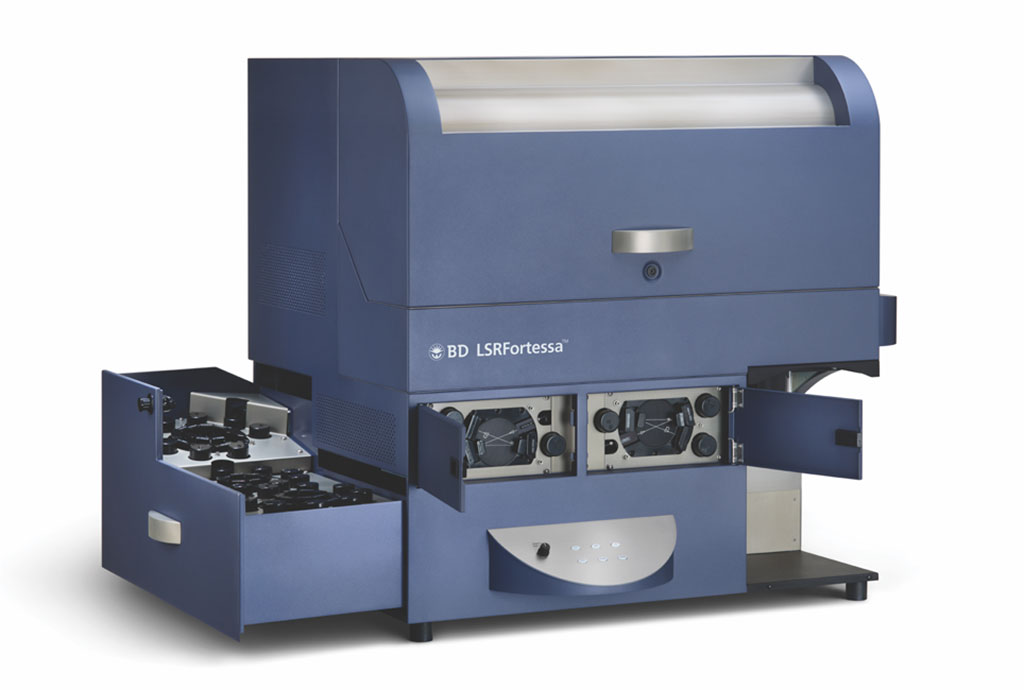Stem Cell Architecture Drives Myelodysplastic Syndrome Progression
Posted on 10 May 2022
Myelodysplastic syndromes are a group of diseases in which the bone marrow doesn’t produce enough healthy blood cells. The diseases originate from cells known as hematopoietic stem cells (HSCs) that can persevere and even grow during standard-of-care treatment with hypomethylating agents (HMAs).
Advances in sequencing technologies have provided insights into the genetic mechanisms that contribute to the progression of MDS to secondary acute myeloid leukemia (sAML). Aberrant MDS cells that reside in the immunophenotypically defined HSC compartment are the source of disease progression, but how these cells contribute to therapy failure and disease evolution remains largely unknown.

A large team of hematologists specializing in leukemia at The University of Texas MD Anderson Cancer Center (Houston, TX, USA) analyzed more than 400 samples from patients with MDS taken at different stages of disease. They used integrative molecular profiling of HSCs, and found that HMAs eliminated mature cancer cells, but left the stem cells alive, leading to disease relapse.
Quantitative flow cytometric analyses and FACS of human live mononuclear cells (MNCs) and CD34+ cells were performed using standard staining protocols for established antigen panels and antibodies. Samples used for flow cytometry and FACS were acquired with a BD LSR Fortessa or BD Influx Cell Sorter (BD Biosciences, San Jose, CA, USA). During treatment, peripheral blood (PB) samples were periodically collected in EDTA-coated tubes, and complete blood counts were performed with an automated ABX Pentra Hematology Analyzer (Horiba, Northampton, UK). Total DNA from BM mononuclear cells (MNCs), neutrophils and T cells was also extracted and processed.
Comparing bone marrow samples from untreated patients to those of healthy donors revealed that MDS samples could be divided into two groups based on the profile of those stem cells. The samples from one of the MDS groups had an abnormal pattern of increased frequency of common myeloid progenitors (CMP) within the myeloid hematopoietic progenitor cell compartment. The other MDS group had an increased frequency of granulocytic-monocytic progenitors (GMP) within the compartment. In both groups, the stem cell populations sustained the disease during treatment and expanded after HMA therapy failure, thus driving disease progression.
The expansions of each of these MDS stem cell types depended on activation of specific signaling pathways unique to each group: the BCL2 survival pathway in the CMP group and NF-κB signaling in the GMP group. Patients with CMP pattern MDS had a shorter time to achieve complete remission relative to those with the GMP pattern (1.2 months versus 6.5 months) and a longer relapse-free survival duration (16.3 months versus 5.2 months). Together, these findings suggest that CMP pattern MDS patients with blast progression can benefit from treatment with the highly selective BCL2 inhibitor venetoclax.
Simona Colla, PhD, associate professor of Leukemia and senior author of the study, said, “The majority of MDS cases do not respond to current therapies or relapse. This study provides new insight into what causes therapy failure and disease progression in MDS and possibly provides targeted treatment options for these patients.”
The authors concluded that the data suggest that the cellular architecture of MDS should be considered as a biomarker for predicting the intrinsic vulnerabilities of the cells that expand at relapse and thus for guiding the design or choice of specific therapeutic approaches targeting these cells, particularly in the setting of venetoclax-based therapy. The study was published on March 3 2022 in the journal Nature Medicine.
Related Links:
The University of Texas MD Anderson Cancer Center
BD Biosciences
Horiba









 Analyzer.jpg)



